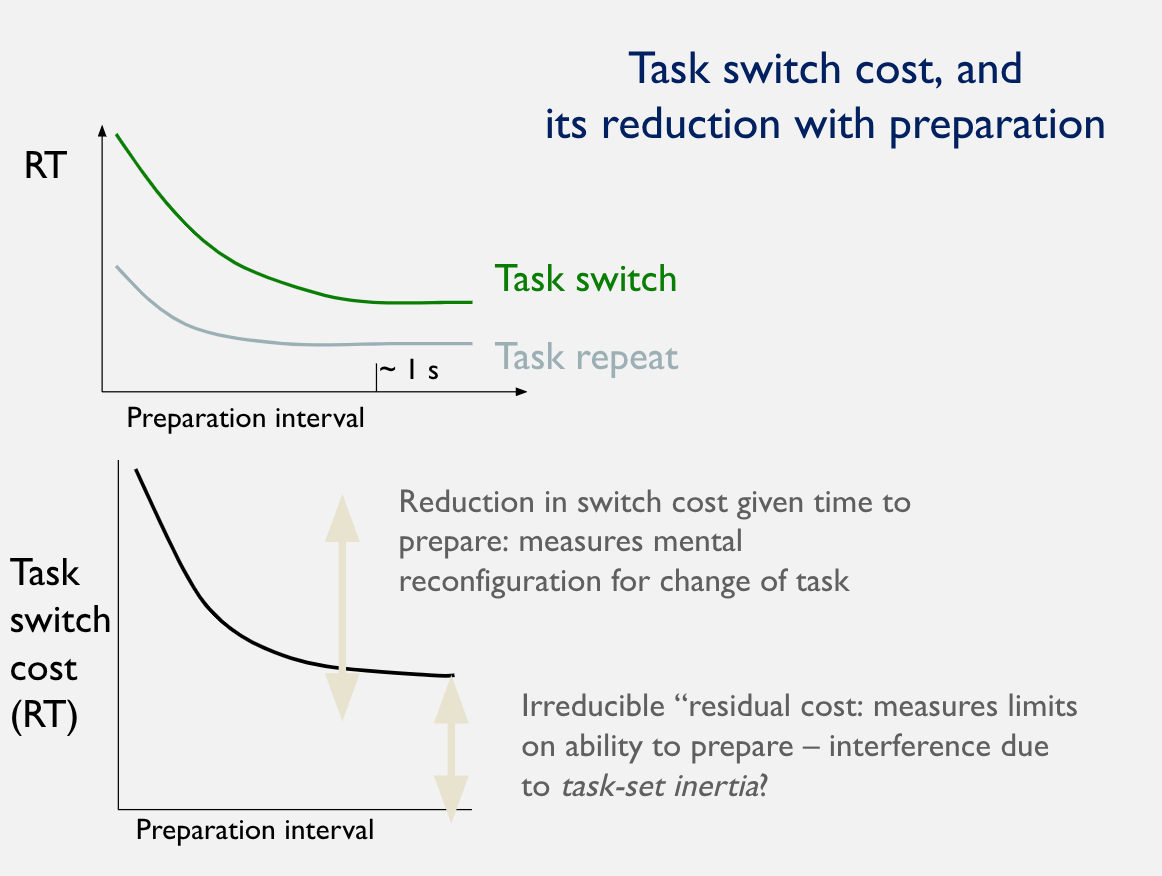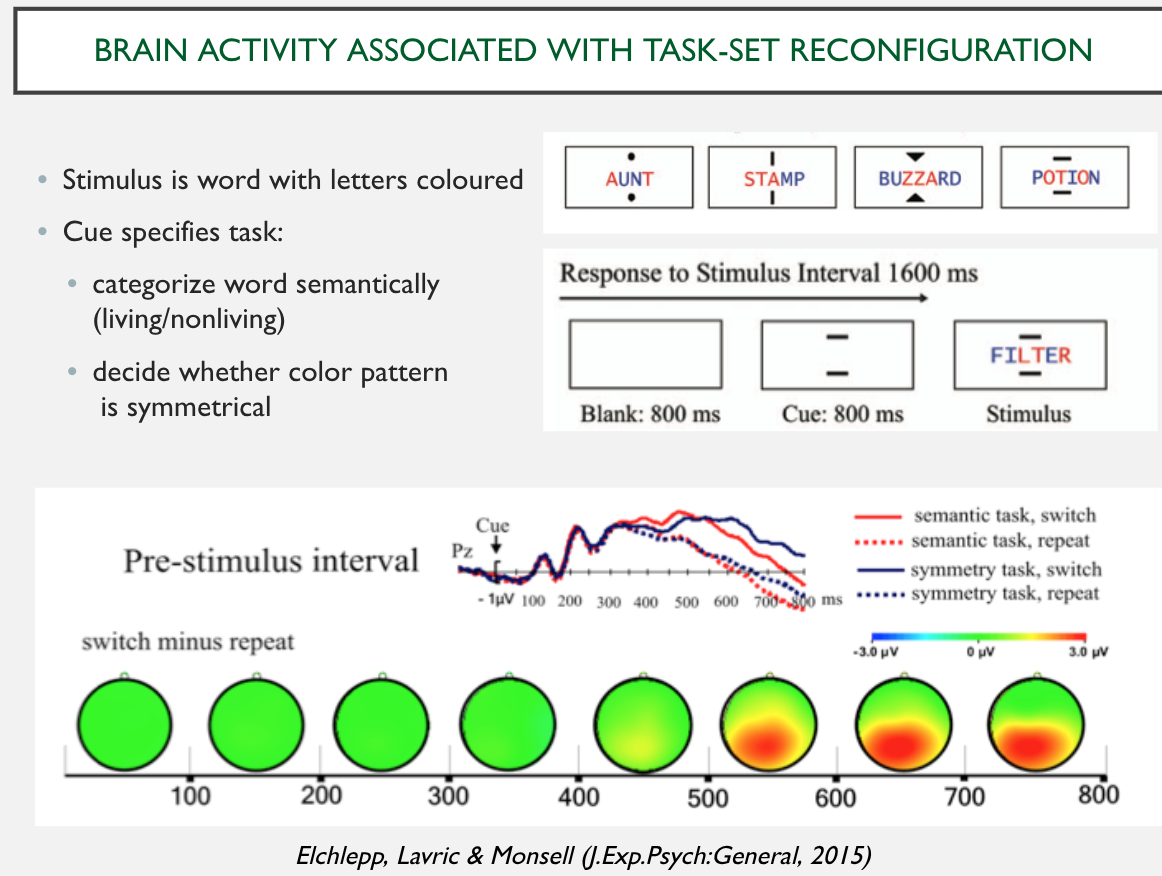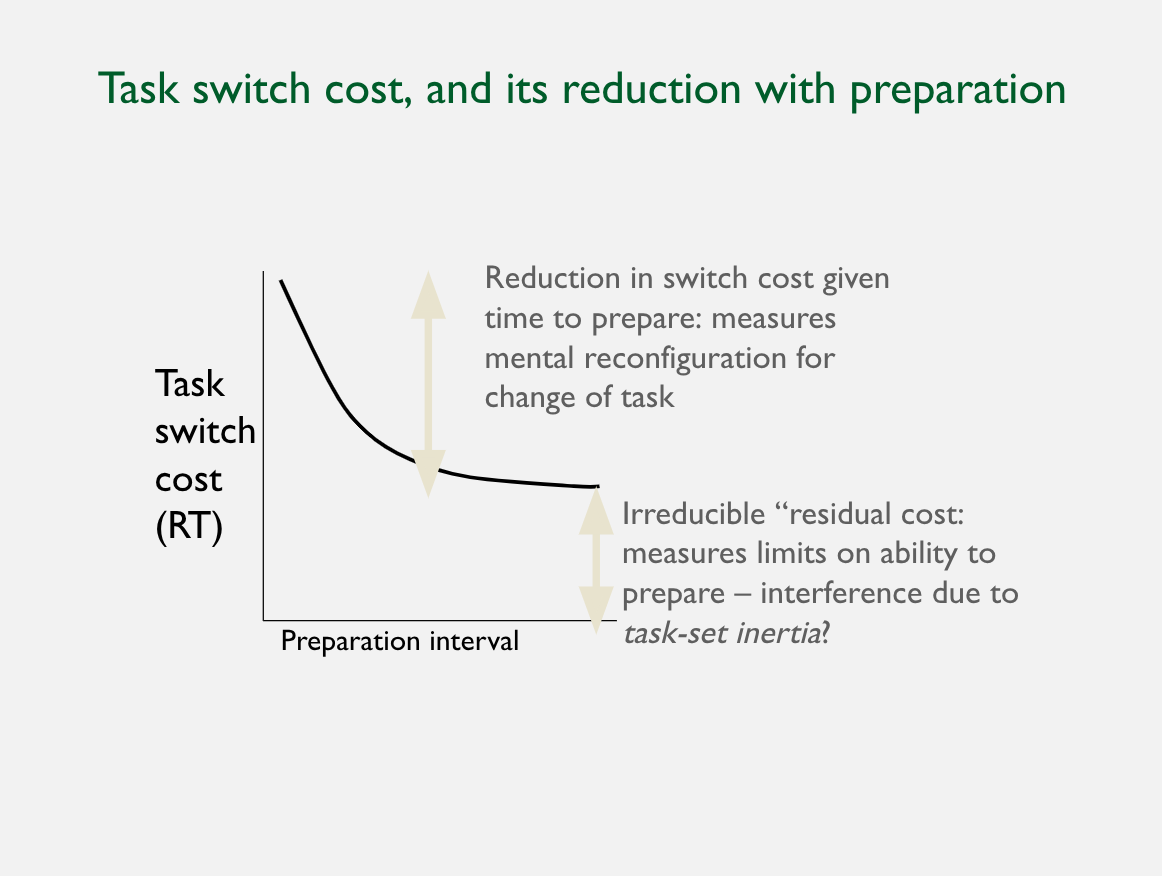control and conciousness/ control of cognition
1/23
There's no tags or description
Looks like no tags are added yet.
Name | Mastery | Learn | Test | Matching | Spaced |
|---|
No study sessions yet.
24 Terms
why is conciousness so difficult to study/explain?
explaining phenomenal awareness:
ie subjective experience: the ‘feel’ of private sensory experience (sensory ‘qualia’), inner thoughts and feelings, action intentions: what is it like to be you
self consciousness: representation of
the bodily self
the self as the subject of experiences
the self as ‘owner’ of actions and intentions (sense of agency)
the correlates of consciousness. What kinds of process/representation in the mind/brain are associated with phenomenal awareness?
The bet: neuroscientist Christof Koch bet philosopher David Chalmers in 1998 that in 25 years science would have uncovered the correlates of consciousness, he lost the bet in 2023
self conciousness: brief observations
neuropsychological disorders of self consciousness include:
anosognosias: not acknowledging major and frank cognitive disorders - eg Anton’s syndrome
anarchic hand (loss of awareness of ownership of intentions)
alien hand or phantom limb/pain (impaired awareness of ownership of body part)
psychotic auditory hallucinations = loss of awareness of intention/ownership of internal speech (frith, 1992)
‘self-consciousness’ in animals?
the dubious status of the mirror test. Does it test bodily self awareness or just ability to interpret mirror images?
which cognitive functions are associated with awareness?
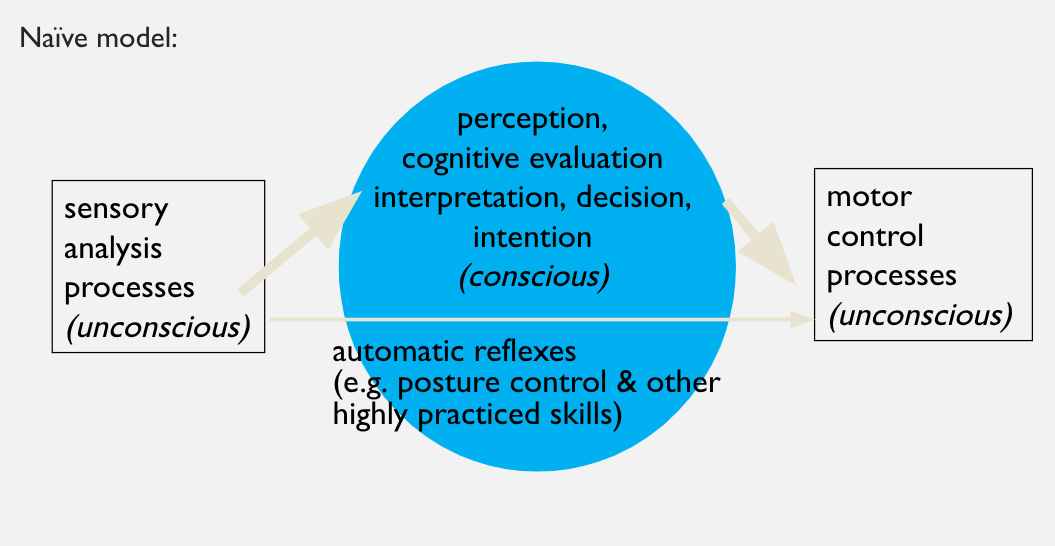
activation of meaning. The standard assumption would be that to apprehend the meaning of a visual object, you have to ‘see’ it
semantic priming obtained from backward-masked words with prime duration at which the presence of word cannot be discriminated (Marcel, 1983)
similarly: masked category priming of pictures, words, faces etc
eg if must classify gender of a face, a different subliminal prime of face of the same/opposite gender facilitates/interferes
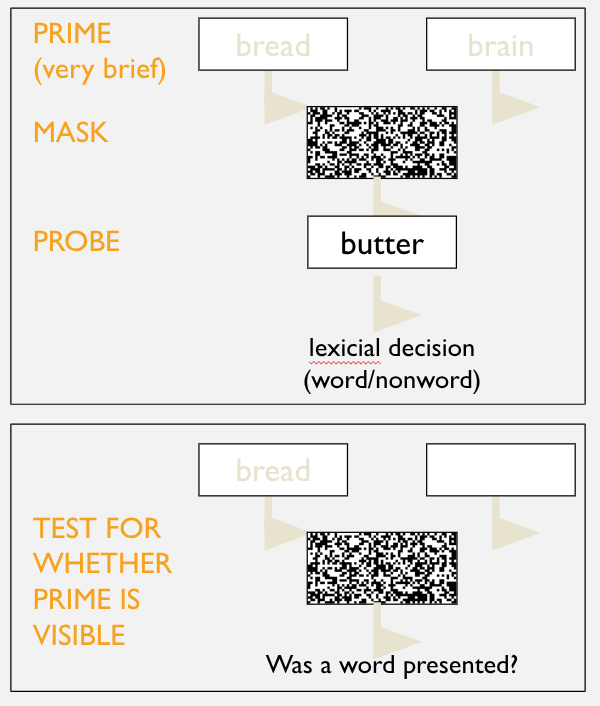
can a subliminal stimulus initiate a voluntary action?

implies you have to consciously see a visual stimulus and intend to act to perform a voluntary action
blindsight
patients with hemianopia (or more restricted scotoma) - area of blindness in the visual field due to cortical (V1) damage - have no conscious awareness of stimuli in the blind region
but (if forced to guess) can voluntarily point at a moving object within the blind region, and make some discrimination of them (eg form, colour) or navigate around obstacles
voluntary actions evoked by stimuli of which normal SS are unaware
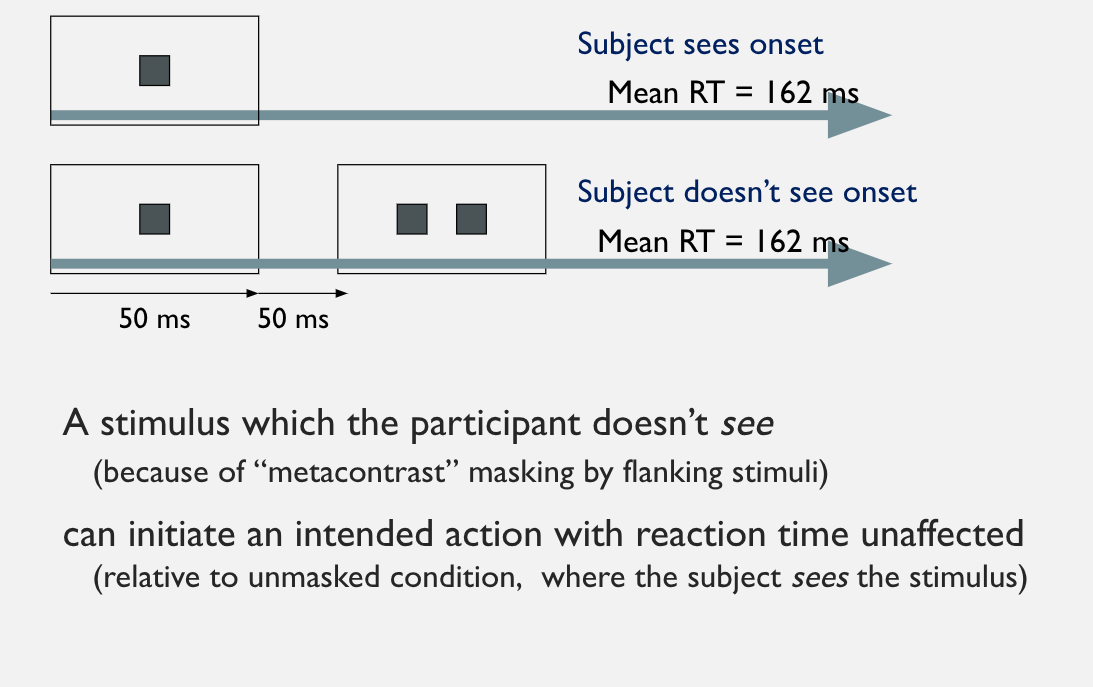
when does awareness of intention happen relative to initiation of action?
are we aware of the choices we make?
when does awareness of intention happen relative to initiation of action?
Libet’s (1983) ERP paradigm:
P raises a finger when they feel like it
and judges (by noting position of rotating clock hand) the moment W at which they consciously initiated action
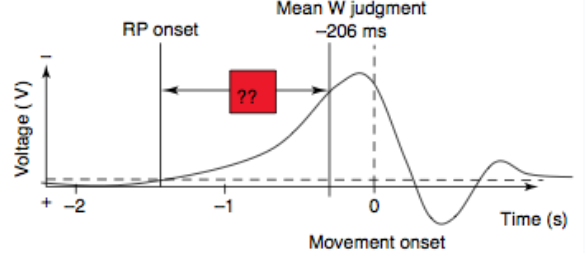
‘readiness-potential’ onset substantially precedes judged moment of intention to act
same is true for (briefer) ‘lateralised readiness potential’ (LRP) associated with selection of left versus right response
awareness follows (caused by) response selection
correlates of concious awareness
much happens in our heads to which we have no access
there are many kinds of mental process/representation which, though often assumed to require awareness, turn out not to need awareness (hence awareness, per se, not casual), including
activation of meanings and emotions
stimulus-triggered or spontaneous action
some kinds of choice and decision-making
how does consciousness arise then? Global workspace theory (dehaene)

quantum theory of consciousness (penrose and hammerof)
consciousness is not a computation computed by the synapses
consciousness originates at the quantum level inside microtubules which are inside neurons (and other cells)
questioned what turns consciousness off? general anaesthetics? how?
some evidence that anaesthetics turn of microtubules
executive control mechanisms (executive functions)
the mind/brain has many specialised or domain-specific ‘modules’ available (for categorising, analysing/generating language, calculating, choosing actions, rehearsing, mental rotation)
but many of these processes do not happen
automatically
all the time
or always in the same way
or linked up in the same way
control mechanisms must select and activate a subset of processing ‘modules’ and organise, link and tune them to accomplish a task
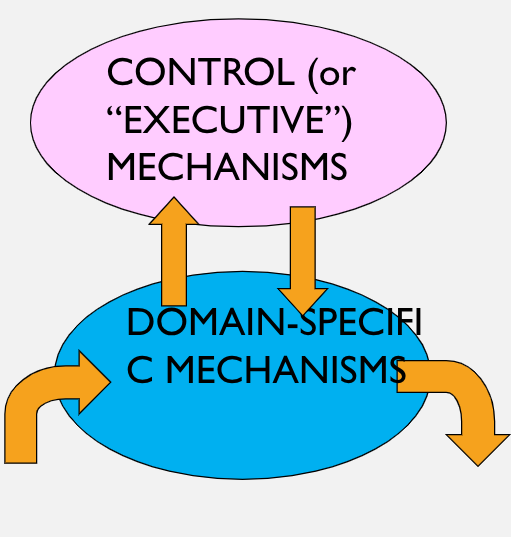
selection/activation of a single ‘task set’

each object we encounter affords many possible tasks
task-set = appropriate organisation of perceptual, cognitive, and motor resources to carry out a task
to some extent we select ‘at will’ which task set to adopt according to current goals
some other functions attributed to executive control
inhibiting inappropriate actions
‘updating’ - selecting information for maintenance (or supression) in working memory
managing search of long term memory
monitoring performance, troubleshooting, adjusting the balance between accuracy and speed of performance
coordinating aspects of multitasking eg keeping different information streams as segregated as possible, prioritising tasks
sequencing, planning, of multistep tasks especially where the actions required are non-habitual
the lure of the control ‘homunculus’
ie attribution of control to a unitary inner agent
brain models
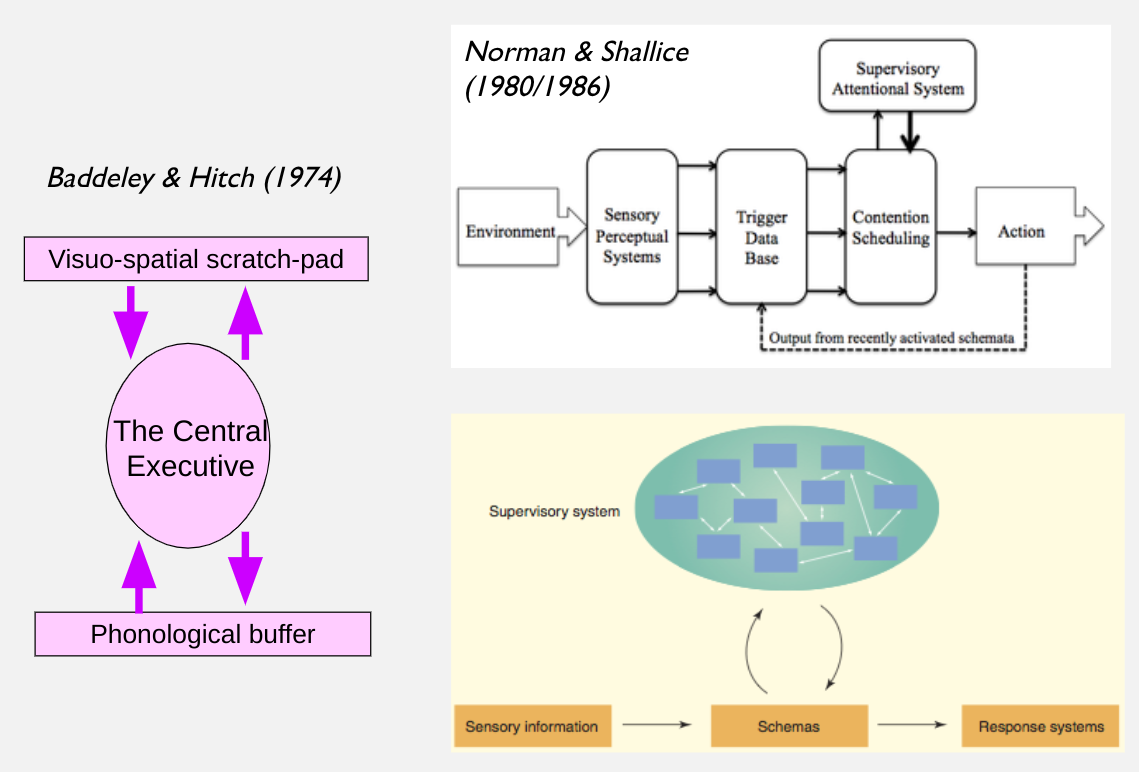
how can we investigate control processes?
observations and introspection of
failures of control in everyday life (some ‘action errors’)
pathological failures of control after brain damage
behavioural experiments: engage control processes in such a way that we can isolate and study their contribution to performance - in unaffected subjects, or patients
experiments on response conflict eg Stroop effect
experiments on task switching
stop-signal experiments
dual task and multitasking experiments
and we can measure brain activity correlated with the exercise of control functions in these paradigms
errors of control in everyday life
systematic analysis of such errors comes from
diary studies
accident inquiries
examples of types of control error:
‘capture’ errors - habitual or recently excersised action patterns seize control of behaviour
‘cross talk’ errors - failure to keep separate elements of concurrent tasks eg
concurrent writing and speaking (phonological code → speech)
‘lost intentions’: failure to initiate intended action when ‘trigger conditions’ set in prospective memory occur
brain damage → control problems
Phineas Gage
"The equilibrium or balance, so to speak, between his intellectual faculties and animal propensities, seems to have been destroyed. He is fitful, irreverent, indulging at times in the grossest profanity (which was not previously his custom), manifesting but little deference for his fellows, impatient of restraint or advice…., at times pertinaciously obstinate, yet capricious and vacillating, devising many plans of future operation, which are no sooner arranged than they are abandoned in turn for others appearing more feasible."
(Harlow, 1868)
especially after damage to the prefrontal cortex (PFC)
importance for PFC for higher-level ‘organisation’ of behaviour suggested initially by clinical descriptions of patients with prefrontal damage
neuropsychological testing has revealed several types of control problems
that are not always associated:
dissociation’s suggest fractionation of executive functions
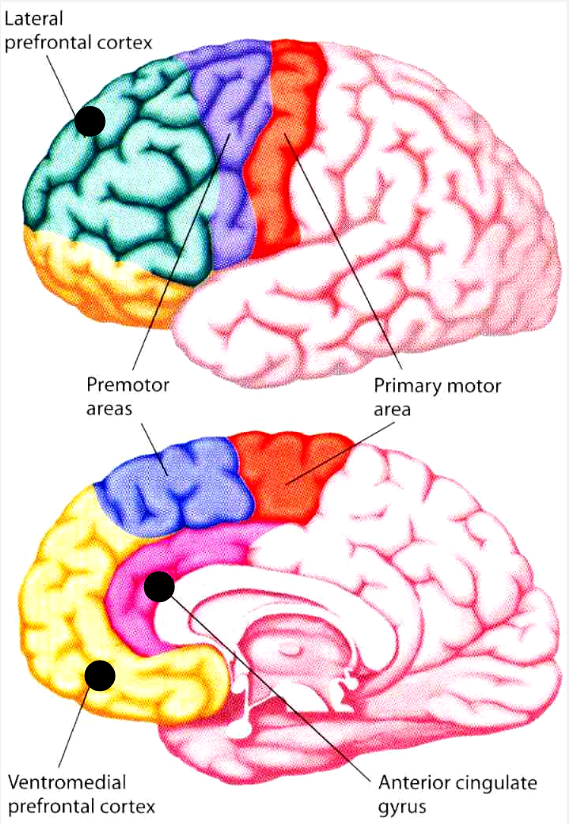
examples of impairments due to PFC damage
‘utilitisation behaviour’
inability to supress habitual action to familiar object (medial PFC)
perseveration
eg wisconsin card-sorting test
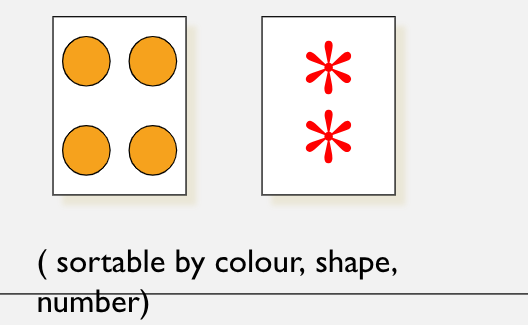
difficulty in evaluative decision making
eg damasios 1999 patient (orbito-frontal PFC)
disordered planning
eg strategy application disorder
‘strategy application disorder’ - Shallice and Burgess, 1991, ‘multiple errands test’ (in shopping mall)
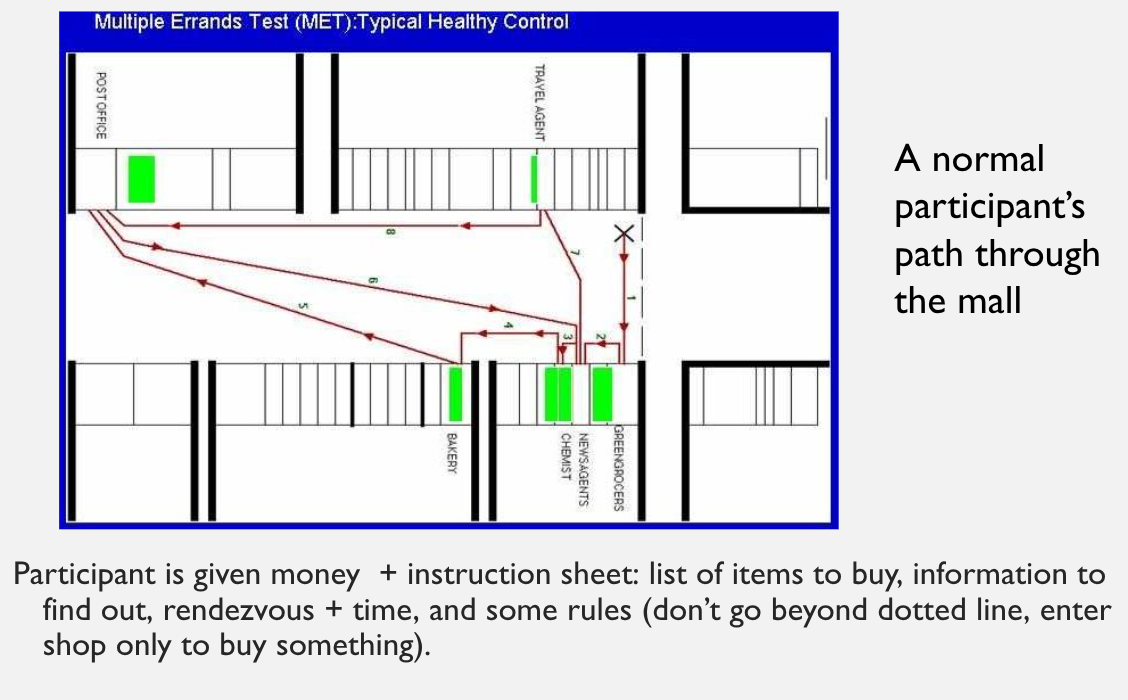
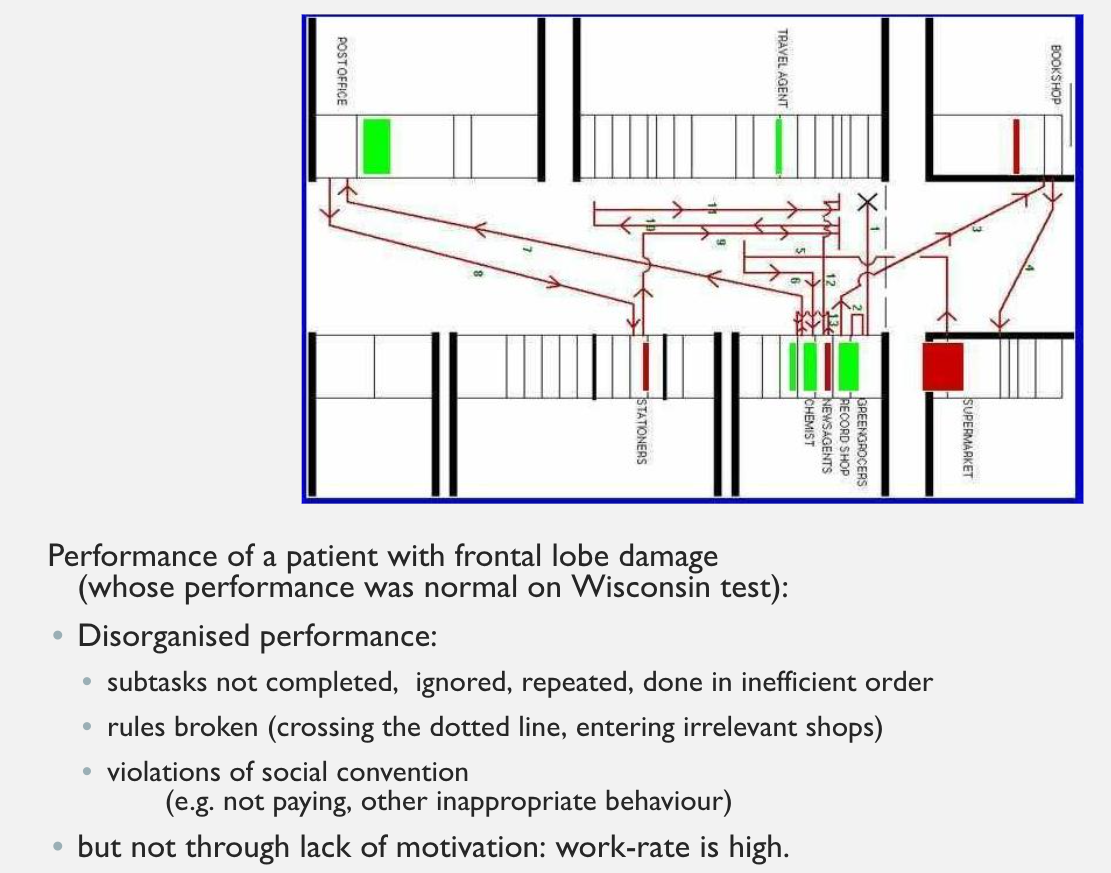
observed dissociations among impairments of executive control after brain damage argue against a unitary ‘central executive’

task switching experiment from practical 3
on each trial, one of two task cues appeared (letter/string or number/digit); followed by a compound stimulus eg E2 or 1U
classify either the letter as a vowel or consonant
or classify digit as odd or even

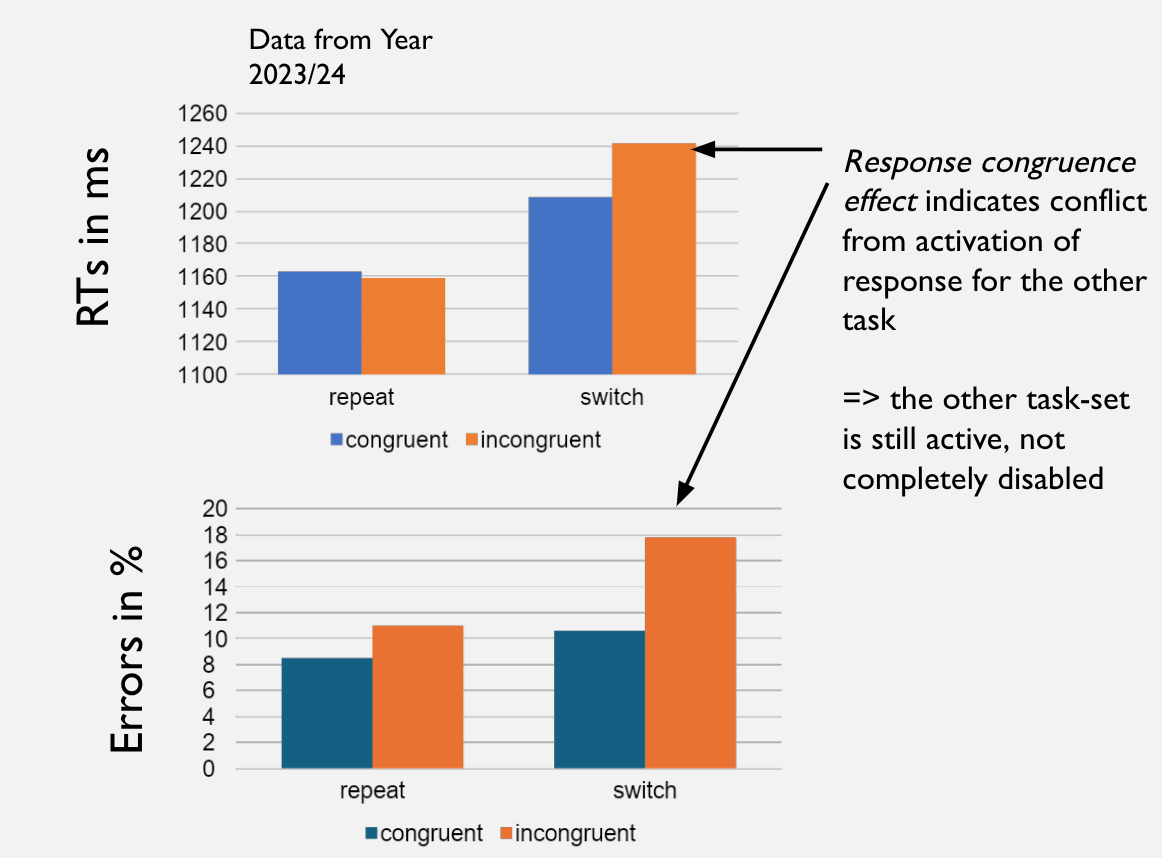
reduction in switch cost with preperation
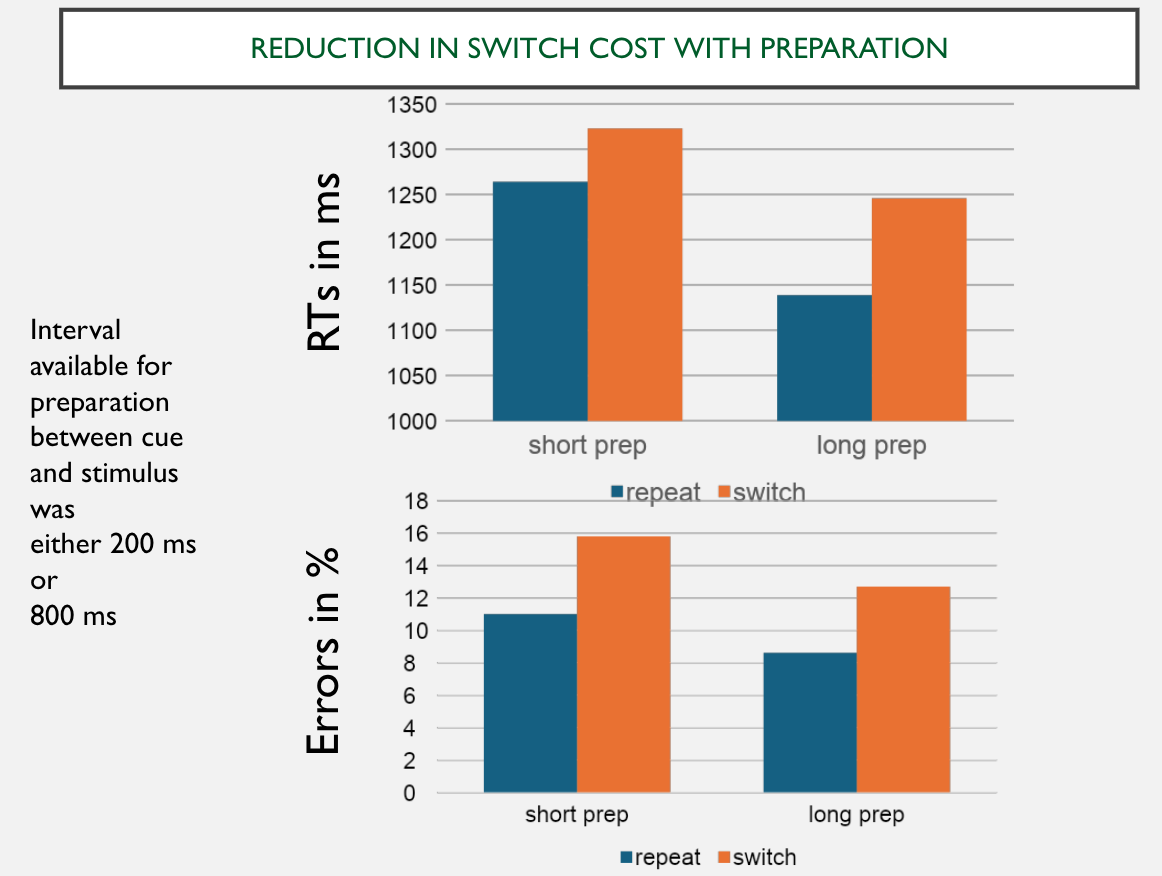
task switching
